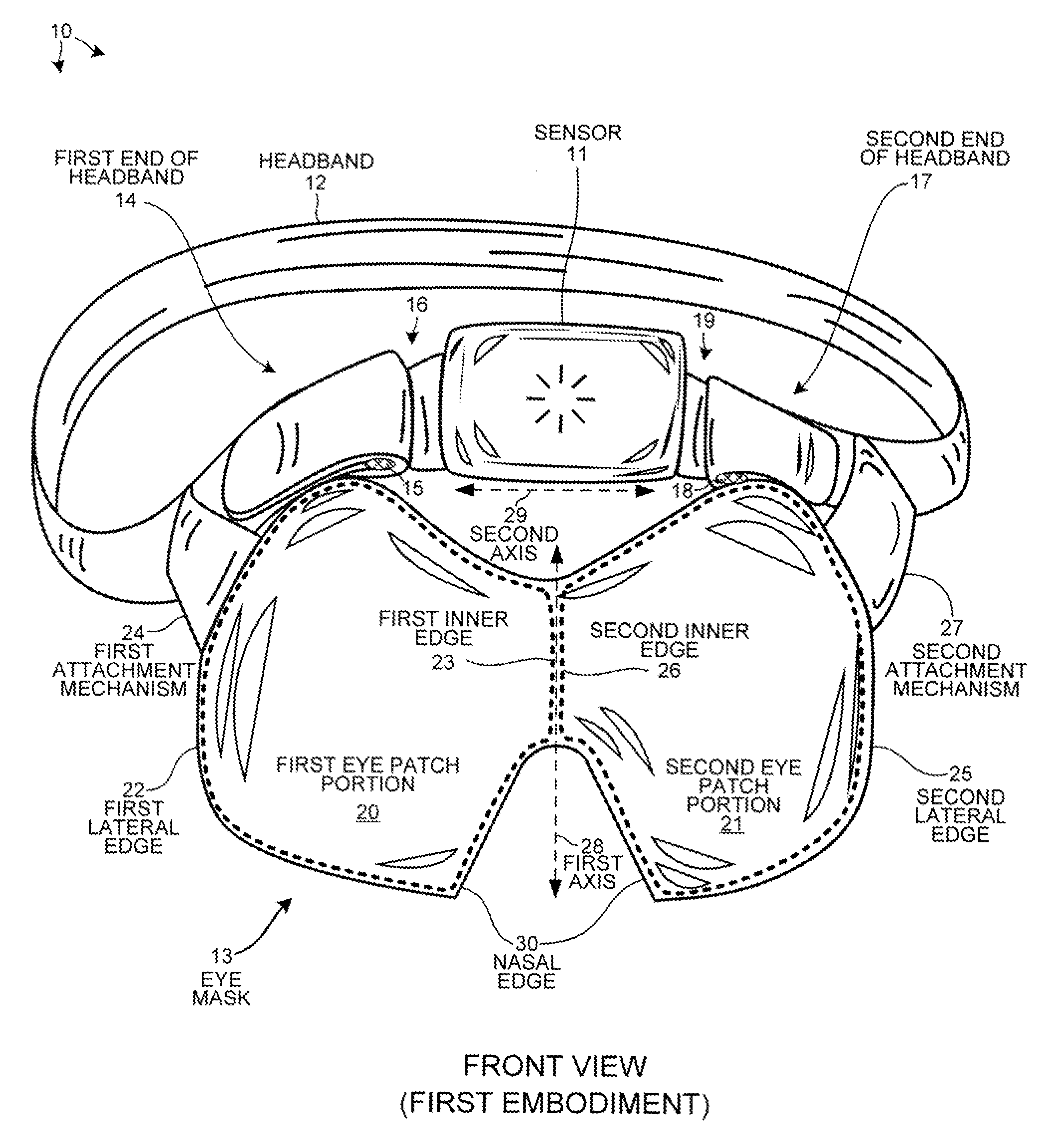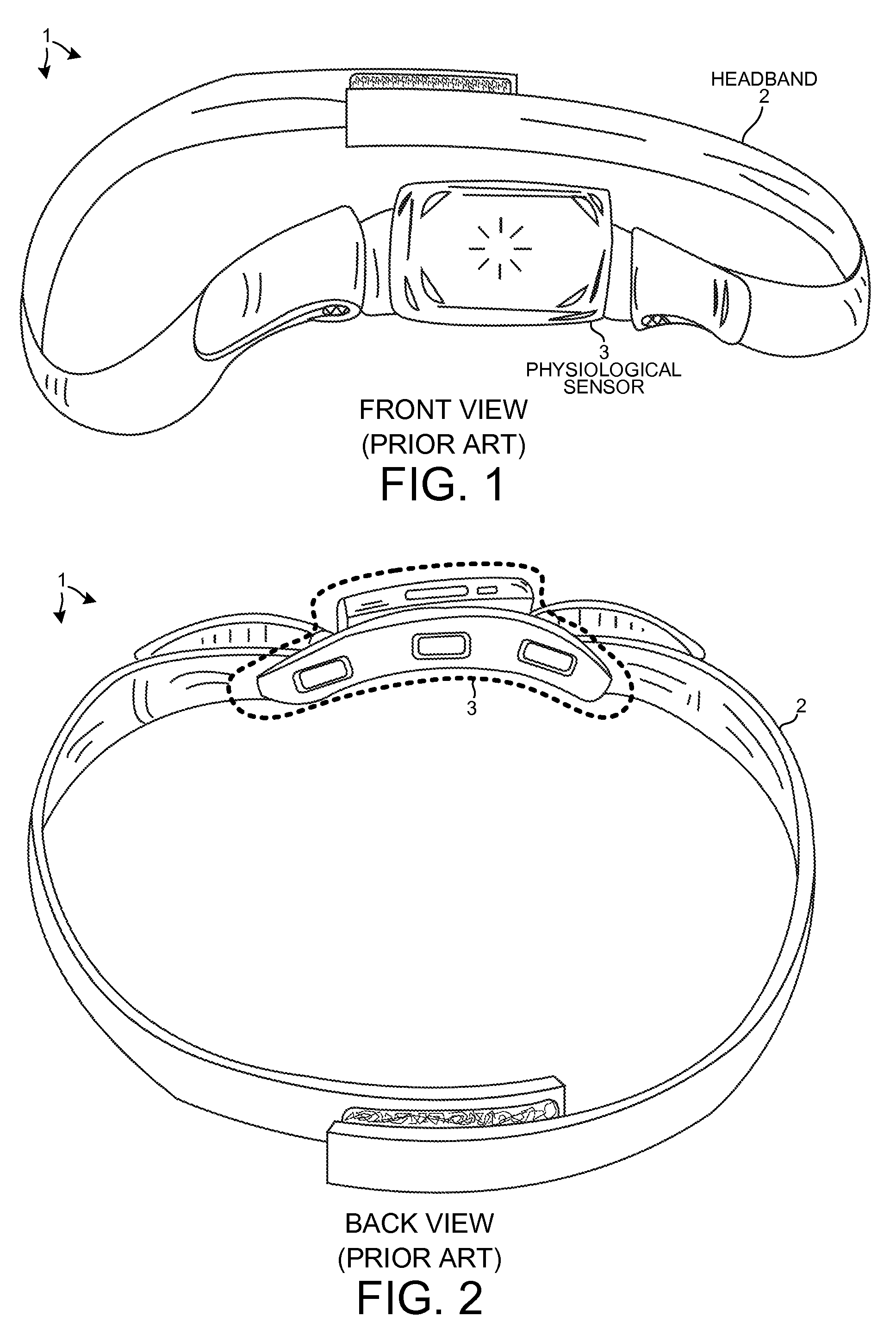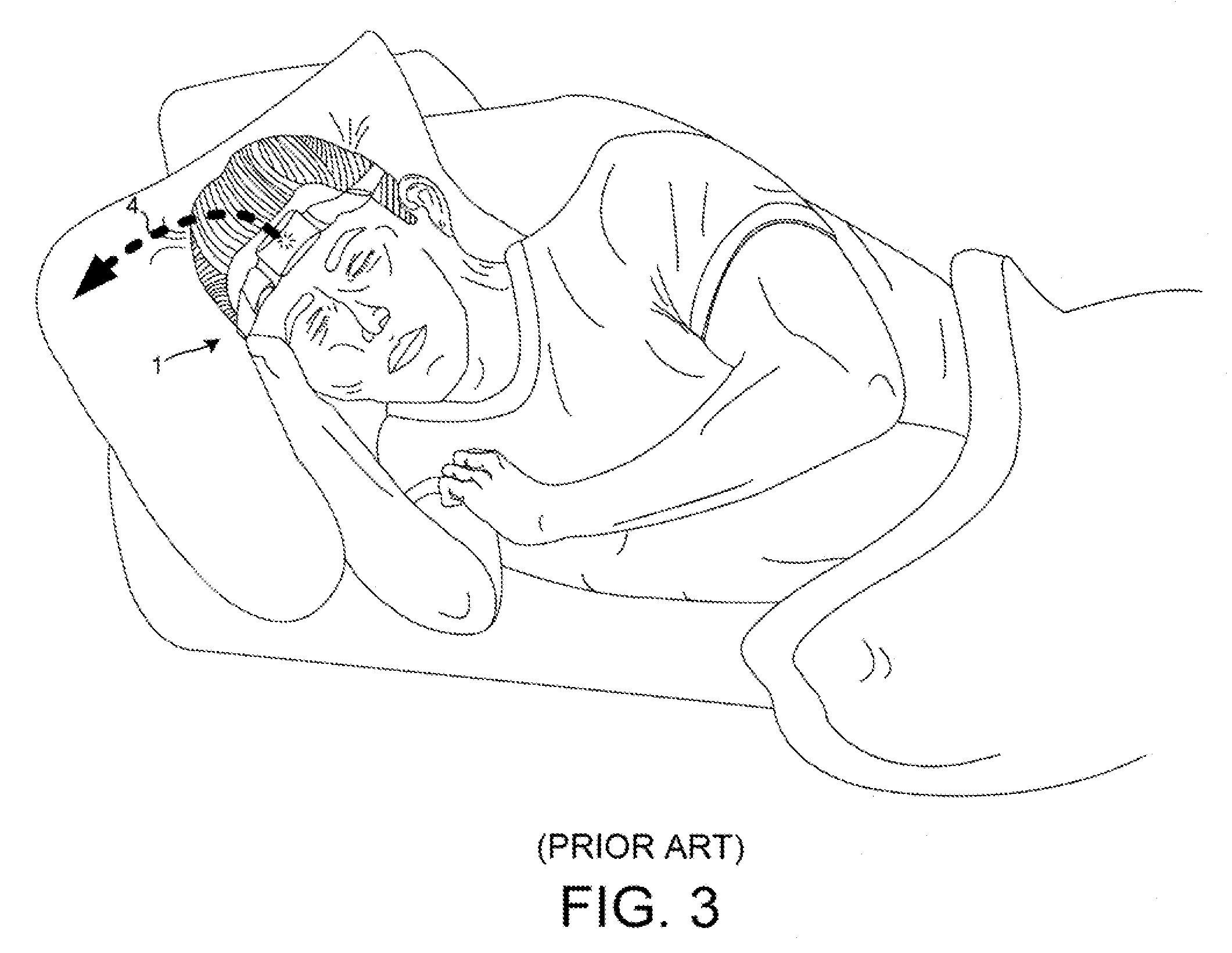Comfortably securing physiological sensors onto a person during sleep
a physiological sensor and comfort technology, applied in the field of physiological sensors, can solve the problems of reducing sleep quality, health problems, and difficulty in maintaining the attachment of a sensor that detects brain waves to the forehead, and achieve the effect of accurately determining the sleep stages of the user
- Summary
- Abstract
- Description
- Claims
- Application Information
AI Technical Summary
Benefits of technology
Problems solved by technology
Method used
Image
Examples
first embodiment
[0030]FIG. 4 is a perspective diagram of a front view of a physiological sensor apparatus 10, in accordance with a The physiological sensor apparatus 10 includes a sensor 11, a headband 12, and an eye mask 13. When the physiological sensor apparatus 10 is worn by a user during sleep, the sensor 11 senses a signal indicative of a sleep stage of the user. The sleep stage of the user detected by the sensor 11 may be a rapid eye movement (REM) stage, a non-rapid eye movement (NREM) stage, or another sleep stage used to characterize the state of sleep of the user.
[0031]The headband is attached to the sensor and is adjustable to fit securely around a forehead of the user. The headband 12 has first end 14 that attaches to a clasp 15 of the sensor 11. The first clasp 15 of the sensor 11 is located at a first end 16 of the sensor 11. Similarly, the headband 12 has second end 17 that attaches to a clasp 18 of the sensor 11. The second clasp 18 of the sensor 11 is located at a second end 19 o...
second embodiment
[0044]FIG. 11 is a perspective diagram of a bottom view of a physiological sensor apparatus 50, in accordance with a FIG. 11 shows a physiological sensor attached inside a sleeping cap 51. The physiological sensor apparatus 50 includes head cap 51, a physiological sensor 52, a first strap portion 53, a first clasp 54, a second strap portion 55, and a second clasp 56. The sensor 52 is disposed on the inside along a bottom edge 57 of the head cap 51.
[0045]The physiological sensor 52 comprises a plurality of electroencephalography (EEG) electrodes 58-60 and a base portion 61. Each of the EEG electrodes 58-60 is disposed on the base portion 61. The signal indicative of the sleep stage of the user is an EEG signal that is detected using the EEG electrodes 58-60 and circuitry (not shown) contained in base portion 61. The sensor 52 is of similar construction and operates in a similar fashion as the sensor 11 of FIG. 5.
[0046]The head cap 51, first strap portion 53 and second strap portion ...
PUM
 Login to View More
Login to View More Abstract
Description
Claims
Application Information
 Login to View More
Login to View More - R&D
- Intellectual Property
- Life Sciences
- Materials
- Tech Scout
- Unparalleled Data Quality
- Higher Quality Content
- 60% Fewer Hallucinations
Browse by: Latest US Patents, China's latest patents, Technical Efficacy Thesaurus, Application Domain, Technology Topic, Popular Technical Reports.
© 2025 PatSnap. All rights reserved.Legal|Privacy policy|Modern Slavery Act Transparency Statement|Sitemap|About US| Contact US: help@patsnap.com



